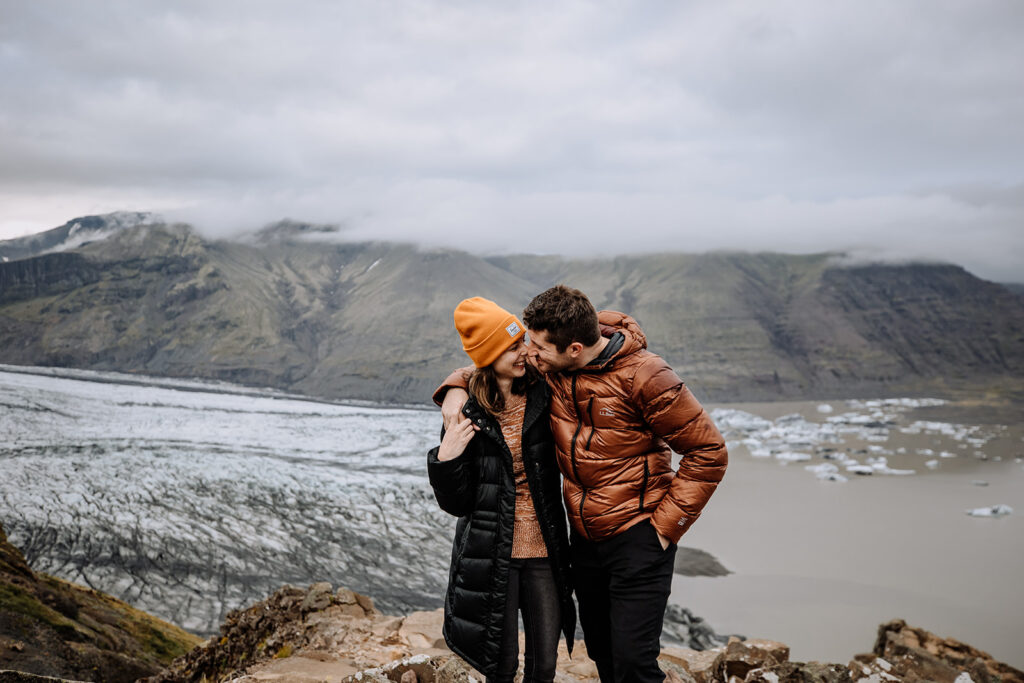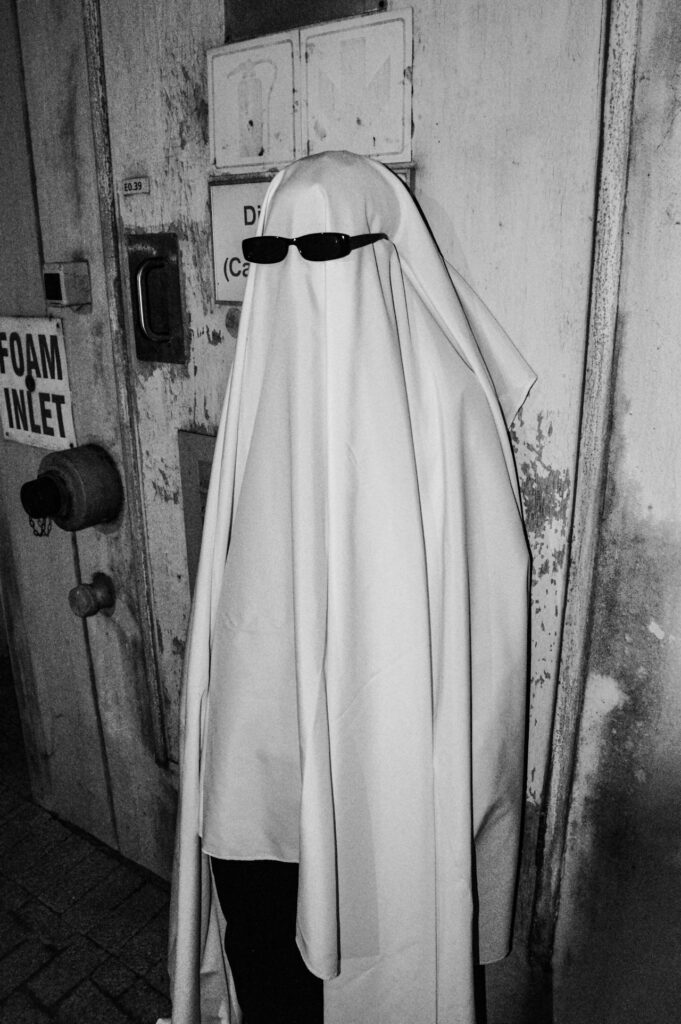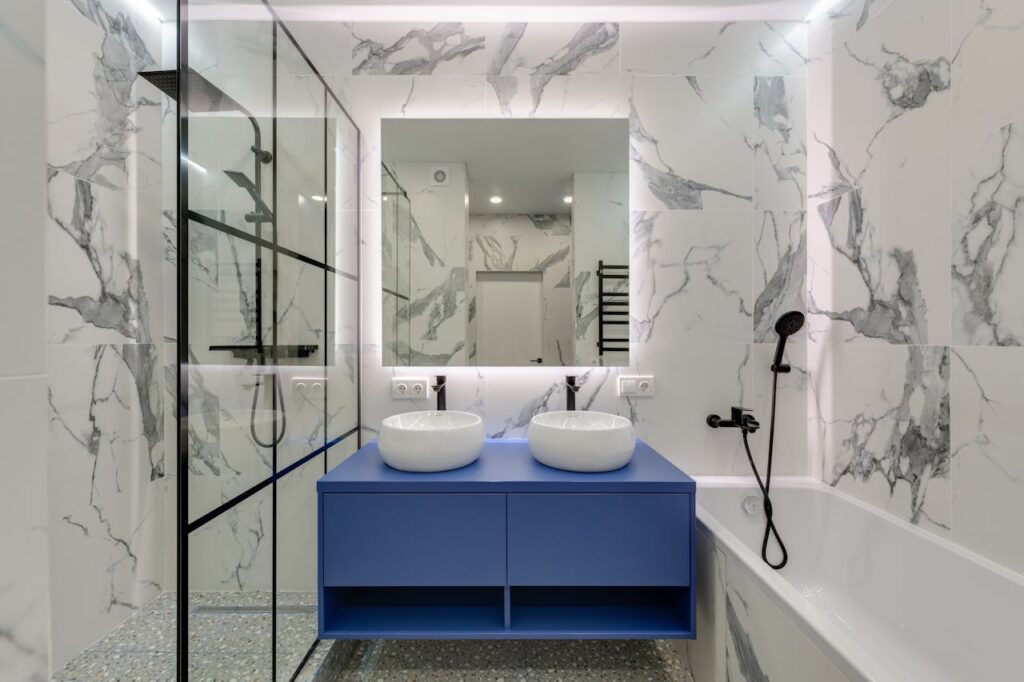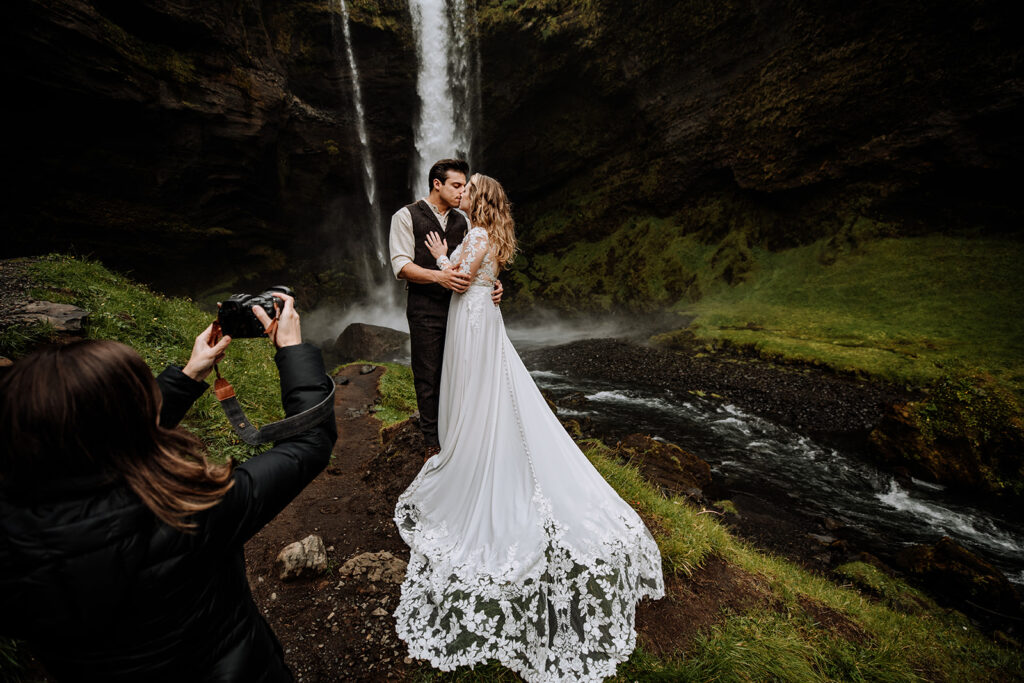We're a team of wedding, elopement and portrait photographers who put community over competition. We provide tips and resources for Photographers looking to up-level their businesses.
We're here to help When you join The Photography Business Academy
How to Handle Photography Business Ghosting Without Losing Your Mind
Photography business ghosting—it’s one of those frustrating and disheartening parts of running a creative business that no one really warns you about.
You get a new inquiry. You’re excited. You respond promptly, professionally, and with enthusiasm. And then… nothing. No reply. No follow-up. Just radio silence. It stings, right?
But here’s the truth: ghosting is part of the game.
And while we can’t eliminate it completely, we can learn to reframe it, reduce how often it happens, and respond to it in a way that actually improves your business long-term.
What Is Ghosting in Your Photography Business?
In its simplest form in our business contexts, ghosting happens when a prospective client reaches out—maybe via your contact form or social media DMs—you respond, and they never reply.
That’s it.
But while it sounds simple, the emotional impact can be surprisingly heavy.
Many photographers interpret ghosting as a rejection—not just of their services, but of themselves. This emotional reaction is valid, but if we stay in that space too long, it clouds our judgment and hurts our ability to respond strategically.
Ghosting as a general social phenomenon has also been increasing common, especially among younger generations. An interesting quote from the Thriving Center of Psychology says this –
“More Gen Zers (77%) have ghosted than Millennials (61%), as well as more women than men. So, why do people ghost? The main reason people ghost is because they’re not interested in continuing the relationship. Other causes include avoiding confrontation or being stressed or overwhelmed by expectations. Nearly 1 in 3 shared they do it because they’re struggling with mental health.”
So – even with ghosting being common enough, how can we handle it so it doesn’t devastate us every time?

5 Reasons Why Prospective Clients Ghost Photographers
If we believe that people who reach out to us do want to work with us (a perspective shift we’ll dig into more in a bit), then ghosting becomes less of a rejection and more of a signal.
The key is interpreting that signal correctly!
Here are several common reasons ghosting happens in your photography business:
1. You Didn’t Respond Quickly Enough
In the digital age, speed matters. If your reply took too long, they might’ve booked someone else already (or at least got a response from someone else that made them feel more interested in them…).
The best performing businesses will be responding to new leads quickly (like – within minutes). In fact, responding within 5 minutes makes a lead 10x more likely to convert based on past research.
One way to address this is by setting up an automated response that offers helpful info and sets expectations can buy you time while showing you’re professional and prepared.
2. Your Response Lacked Value or Clarity
Sometimes, our initial reply just doesn’t hook them. It might be vague, overly generic, or lacking important info (like next steps, pricing clarity, or personality). If they can’t see the value, they won’t be motivated to reply.
3. They’re Simply Overwhelmed
Especially in wedding and elopement photography, your clients are likely juggling dozens of vendors, job responsibilities, and life in general. It’s easy for an email to get lost in the shuffle—even unintentionally.
I would challenge you to think about times in your life you had to make big purchasing decisions.
Speaking for myself, when I bought things like my car, my dishwasher, hired vendors for my own wedding, and even my house – I always had to do these things while also balancing my job responsibilities (and more)…and it can feel like a lot!
4. They Saw the Pricing and Got Spooked
If your initial message includes pricing, and the client doesn’t perceive your value to match the cost, they may back out silently.
Many people avoid direct confrontation or uncomfortable conversations, so instead of saying “You’re out of my budget,” they disappear. This is a classic symptom of ghosting behavior!
As we teach, budgets are not the only factor that influences people’s buying decisions, but they certainly are a factor. And it’s going to be more impactful the more you are competing on price vs. finding unique ways to standout through your brand, website, marketing, client experience and so on.
5. They’re Shopping Around
This is normal. Most clients will inquire with several photographers. They’re comparing styles, prices, packages, personalities, and availability. Your job? Stand out by providing a better experience, not just a quote.
While a lot of people “window shop” by going from website to website, IG profile to IG profile, sometimes this behavior extends to the people they reach out to. The good news is that – by submitting an inquiry with you, they are expressing a higher level of interest…but don’t misinterpret that interest as a commitment to work with you. You still have work to do to make that happen!

Reframing Ghosting: It’s Not a Rejection—It’s a Clue
Here’s the mindset shift that changed everything for me…
Everyone who contacts me wants to work with me.
That may sound overly optimistic, especially if you lean toward cynicism in your day to day life (and I’m generally guilty of this!). But this belief reframes ghosting from “they’re ignoring me” to “they need more reassurance.”
When you believe that every inquiry is a genuine lead that wants to work with you, you start doing things differently:
- You communicate with more care and confidence.
- You build stronger follow-up sequences.
- You design experiences that make people feel seen, heard, and excited to commit.
Ghosting, then, isn’t the end of the conversation—it’s a pause. One that you, as the business owner, can influence and take control of.

Ghosting Through the Lens of a Client: My Experience Hiring a Contractor
To put this into perspective, I want to share a personal story.
I think it’s important to think about how we approach buying things (especially expensive things), since this can help support how we think about our prospective clients through a more empathetic lens (which is a health thing in general but specifically in business can open our eyes to new opportunities!).
I once hired a contractor to remodel my bathroom. It was a dated 70’s style space with outdated (and some broken) fixtures, not something I really loved being in, and needed to update for my aesthetic sanity and before things ended up leaking and causing water damage.
Before choosing the right person, I looked at several options. I explored referrals from friends, checked out some companies through Google search, even explored social media for options. I considered their reputations, their specialties, their pricing, and—most importantly—how confident I felt that they’d deliver what I needed.
Ultimately, I chose someone a bit more expensive than my initial budget allowed because their expertise and communication gave me confidence. The result? I was far more satisfied with the outcome than I would’ve been had I chosen the cheapest or fastest option.
The same process applies to photography clients. When someone is booking a photographer, they’re not just buying a product—they’re investing in a result and an experience. They’re looking for trust, clarity, and confidence in their decision.
Ghosting doesn’t always mean rejection. Sometimes it just means they haven’t yet felt sure enough to commit.
Understanding Luxury Services (and Why This Matter for Photographers)
Photography, especially wedding, elopement, or portrait work, falls under what’s known as a “luxury service.”
While the term “luxury” might conjure up a gut response for some of you reading this as it’s become associated with a certain photography style and vibe, in this context the word simply means the service is not a necessity like food or housing—it’s something people choose based on desire, experience, and perceived value.
In luxury markets, buyers tend to:
- Take longer to make decisions
- Expect more communication and personalized attention
- Be more influenced by brand perception, trust, and storytelling
- Require more touch points before committing (often 7 or more)
If you’ve ever wondered why a client ghosts after seeing your pricing, consider whether you’ve created enough of a luxury experience for them to feel confident in paying a premium.
- Have you shared what makes you different?
- Have you made them feel understood?
- Have you provided stories, visuals, or insights that help them picture themselves working with you?
These are just some examples of things that help influence people (even if you don’t always get direct feedback) – and this starts way before someone would take the steps to inquire with you.
From a very fundamental brand level, creating a client avatar and committing to using it as you create your website, marketing, and client experience helps you to attract better qualified leads.
And…the higher your prices are, the more important this becomes. Truly luxury buyers aren’t just buying photos—they’re buying peace of mind, a sense of identity, and an emotional connection to the final result.
Want to learn how to charge more with your photography business? Get in touch to learn how we can help!

How to Respond to Ghosting in Your Photography Business
Now that we understand the why, let’s dive into the how. Here’s a step-by-step approach to actually address ghosting – both in terms of mindset changes and actual actionable things you can do:
1. Accept That Ghosting Happens
This one stings, right?
Here’s the reality (for any business, not just photographers) – not every lead is going to turn into a client. That’s normal. Let go of the idea that you’re doing something wrong every time someone doesn’t reply.
Getting more leads is part of the solution to dealing with this – I’ve personally used a serious SEO and blogging strategy to generate a ton of organic traffic and new leads each month. But, sometimes new leads isn’t all you need…sometimes it’s about doing more with the ones you have!
2. Create a Strong Initial Response
Your first reply is hugely important and should do a couple of things (with some flexibility to be customized depending on your specific business goals!). These include:
- Reiterate your excitement to connect
- Provide essential info (pricing, process, availability)
- Include a clear call to action
- Reflect your personality and brand voice
Bonus things to add: include links to portfolio pieces or client testimonials that add social proof.
We cover initial responses (and way more) in our Sales for Photographers course, including email templates to help you bring them to life!
3. Automate Thoughtfully
Set up an auto-responder for inquiries that –
- Confirms receipt
- Provides basic next steps or FAQ
- Builds trust right away
An auto-responder is also a great way to get a response to people quickly (which helps improve overall sales conversion) without putting a ton of weight on you to personally respond to everything that comes into your inbox.
4. Follow Up (More Than Once)
Don’t stop at one follow-up. Create a sequence of 3–5 emails (or more) that span 1–2 weeks. We’d go as far as to say you should be sending follow ups until you get a response – whether that’s a “yes” or “no.”
There have been times in our businesses where we have booked clients as a result of 10+ follow ups, and you might find it surprising that instead of people responding as annoyed (which is sometimes a fear people have about following up in general), they actually respond relieved and excited!
As a general rule, each follow-up should do the following things –
- Be value-driven
- Offer more clarity or inspiration (like a helpful blog, tips, or a behind-the-scenes story)
- Give them an action to do (like reach out to set up a call)
Remember: Many sales happen on the 7th+ touch point. Don’t give up too soon!
We also cover all these follow up responses in our Sales for Photographers course, including email templates and video walkthroughs of each that help you understand them and customize them to suit your brand’s needs.
5. Don’t Take It Personally
Easier said than done, I know. But ghosting often says more about what’s happening in their life than yours. Maintain professionalism and keep the door open.
You’d be surprised how often people come back weeks (or months!) later.
Something I like to think about – if I booked just a couple of extra clients who I initially wrote off as “ghosting” me…how would my business look? If I looked at my average booking sales figures, it would be significant. And I’m sure this would be the case for many of you reading this!
Final Thoughts on Photography Business Ghosting
Ghosting doesn’t mean you’re a bad photographer.
It doesn’t necessarily mean your prices are too high, or your personality is off-putting, or that you’re destined to fail.
It means that modern consumers are overwhelmed, distracted, and often unsure of what they really need.
The best thing you can do is be consistent, be valuable, and believe in what your offering. If you keep showing up with clarity and confidence, the right clients will respond.
Need help addressing a ghosting problem in your photography business? Our Sales for Photographers course is a great resource that covers how to manage this problem with new inquiries, and is a part of our full Photography Business Academy – which is an online course + community library that can help you establish a stronger, more consistent business.

Honesty is a cornerstone of Shoot and Thrive, so we want you to know that some links in this post are affiliate links. This means we may earn a commission if you make a purchase—at no additional cost to you. We only recommend products and services we trust, have used ourselves, or have thoroughly researched based on industry feedback. Our goal is to provide solutions that genuinely help, whether they come from our direct experience or the collective knowledge of the photography community.
As photography business educators, we believe it's important for educators in this industry to be active photographers themselves. The images used throughout this website were taken through our photo studios - Hand and Arrow Photography and Marshall Scott Photography, except for stock images or if otherwise noted.
Turn Your Passion into a Thriving Business
Transform your photography business into a streamlined, profitable venture that gives you more time, freedom, and confidence.
With the Photography Business Academy, you’ll have a step-by-step guide to building the business—and life—you’ve always dreamed of. From branding to marketing, finances to client experience, we’ve got you covered.
Navigation
Shoot and Thrive is an ethically created resource for photographers needing mentorship, coaching, or business education. We believe in creating content that’s easy to digest and retain while incorporating educational best practices, so you gain clarity and confidence as a business owner.